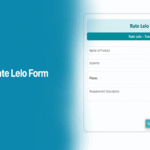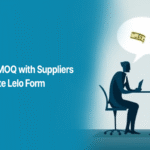Wholesale disposable water bottle demand keeps rising, because these bottles are no longer a luxury; it’s a safety concern pushing the supplier to keep a close eye on packaging, supply chains, and compliance.
Although in Pakistan, more businesses are realizing that bottles are not just packaging, they’re a brand identity. However, according to the reports, the plastic water bottle market faces key challenges, including consumer perception regarding the safety material, especially with increasing awareness about environmental concerns related to plastic pollution.
Furthermore, the market is also experiencing competition from other types, such as stainless steel, aluminium, and glass water bottles wholesale, which are perceived as eco-friendly alternatives. So, if you are looking to sell or even planning to sell disposable water bottles in bulk, here are the 2025 trends.
-
Market Growth
Various factors are increasing the disposable bottled water demand with over CAGR 11 % by 2030. This demand feeds wholesale volumes, retailers, and distributors buy more frequently and in larger batches than before, as on-the-go consumption rises.
Where the growth is coming from:
| Demand Drivers | Description |
| Rising Urban Consumption | Dense city centers and transport hubs provide and offer purchases for home use. |
| Health & Hygiene Awareness | Post-pandemic habits raise the need for sealed bottles, signaling safety and quality control. |
| Institutional & Event Demand | Weddings, conferences, sports events, exhibitions, religious gatherings, and corporate townhalls create predictable spikes, often requiring private-label or co-branded bottles. |
| Seasonality | Heatware and late spring increase its sales. Ramadan and Eid travel window also left volumes especially for single-serve and multipacks. |
Another important reason was the affordability, lightness, and logistics. They fit the kirana store, canteen, and more places because they are a necessity and tolerate rough handling better than glass. This is not all, for the distributors they reduce the breakage risk, and for retailers they maximize the face per shelf. Last but not least for consumers, it is the most convenient option during commutes and outdoor activities.
-
Stronger Manufacturing Capacity
Most of the manufacturers in the PET bottle segment are adapting to environmental pressure and cost needs through innovations in production and materials. Although the rising awareness of lightweightness is creating thinner yet durable bottle that reduces the resin use and shipping cost, which ultimately improves the wholesale margins.
However, the recycling infrastructure is limited, leading brands are beginning to adopt rPET to signal sustainability, and wholesalers should expect future demand for PET.
-
Customization & Branding
The growing purchasing demand of large institutions, corporations, and events is creating a significantly high margin B2B opportunity centered on customization and private label services. Many hospital and corporate clients are looking for private-label bottles featuring their own logo and branding. This demand allows the wholesalers to partner with manufacturers for offering a critical revenue stream based on co-branding, where the quality of the water is guaranteed by the producer.
-
Price Volatility
The wholesale market faces challenges from external economic forces or from consumer choices. Because the price of PET resin is closely linked to the price of crude oil around the world, it is always changing, which forces wholesalers to use flexible pricing and make sure they have stable contracts.
At the same time, urban middle-class buyers are starting to like reusable options like stainless steel, aluminum, and glass bottles because they think they are better for their health and the environment. Disposable bottles are still the most popular choice because they are cheap and easy to use, but these high-end alternatives are becoming a bigger threat in the long run. This is pushing disposable brands to prove their worth by being affordable and having certified quality.
-
Quality & Safety
Consumer concern for both the safety of water and plastic has become non non-negotiable standard; the success of the brand is directly connected with the demonstrable trust and stringent quality control.
Meanwhile, regulatory bodies like Pakistan Council of Research in Water Resources (PCRWR) have intensified their monitoring and public reporting for the delisting the non non-compliant brands. This push for quality and safety has insisted that the wholesalers insist on verification and lab certification for water material, and buyers should sample pre-production runs before ordering.
-
Distribution and Logistics
Efficiency and reach in the supply chain are crucial for maintaining wholesale margins and market dominance in a country with a large, fragmented retail landscape. So, in countries like Karachi, Lahore/ Faisalabad remain the distribution hubs with frequent shipments; on the other hand, frequent deliveries to the smaller towns can be slower and costlier.
To overcome this issue, plan buffer inventory for the remote sales channel and build partnerships with local freight forwarders to keep unit costs low.
Well, if you are looking for sourcing these wholesale water bottles, whether it is empty plastic drinking water bottles wholesale or 200 ml water bottle wholesale price, Alahdeen B2B marketplace is making it easier for you to find wholesale water bottle suppliers near me. They help you in requesting a quote, comparing rates, and connecting with the desired supplier.
Conclusion
In sum, buying or selling wholesale disposable water bottles in Pakistan is the smart move in 2025 for balancing the cost with future-proofing, secure and reliable PET supply that contributes to a safer and greener environment.


